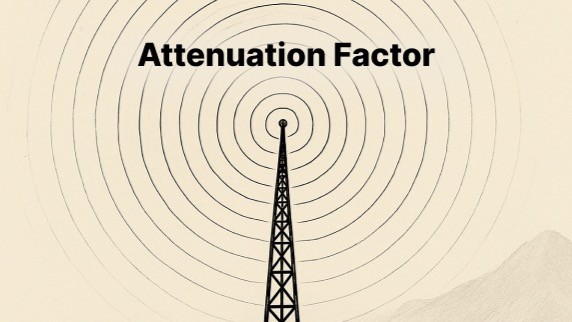The Blindfold
The same brilliance that builds billion-dollar companies destroys them.
It’s not incompetence. It’s not simply arrogance. It’s a twisted bi-product of success itself.
Watch the pattern that killed billion-dollar empires.
These leaders didn’t lose their intelligence. Success replaced their curiosity with certainty.
1997: Blockbuster has 6,470 stores, $3.91 billion in revenue, and 12 years of experience. Netflix is tiny and unproven.
But Blockbuster CEO, John Antioco, was blinded by success.
Fast forward 13 years, Blockbuster goes bust — audiences demand more Netflix.
1998: Yahoo refuses to buy Google for $1 million. CEO Tim Koogle built Yahoo from startup to $125 billion through complex thinking and deep curiosity.
But success whispered: “Humans curate better than algorithms.”
Google’s algorithm ate them alive.
2000: MySpace dominates social media. 115 million users. Their founders, Chris DeWolfe and Tom Anderson, built it from nothing through curiosity and critical thinking.
But success taught them the wrong lesson: “Customization is king.”
Facebook won with simplicity they couldn’t see.
2007: Nokia controls 40% of phones. CEO Jorma Ollila was Europe’s most celebrated executive. He transformed Nokia from paper mills to mobile phones through raw cognitive horsepower.
But success convinced him: “Hardware excellence wins.”
iPhone destroyed them with an app store.
BlackBerry’s Mike Lazaridis: Built the company through obsessive curiosity about mobile email. Died believing physical keyboards were sacred.
See the transformation?
Every single leader STARTED with:
• Cognitive horsepower — Processing complex problems
• Critical thinking — Questioning everything
• Deep curiosity — Hunger to learn
• Complex model building — Understanding how systems work
That’s HOW they built billion-dollar companies.
But then success performed a magic trick…
It replaced their critical thinking skills with overreliance on the patterns of their past success.
Their curiosity became certainty.
Their questions became irrefutable answers.
I call this The Attenuation Factor: The gradual loss in force, effect, value or relevance of one’s experience as conditions change.
When you succeed, your brain locks in the pattern. “This worked, so this is how things work.”
You stop thinking critically because… why would you?
You built a $6 billion company. You must know something.
But here’s the killer:
Your success came from foundational attributes that never expire.
Your failure comes from pattern recognition that expires in 18 months.
Let’s take John Antioco as an example:
Antioco at Circle K: No answers, just grit and critical thinking. He turned it around from bankruptcy to a $425M sale in 2 years.
Antioco at Taco Bell: Pure critical thinking and managing complexity. “What if fast food could be… faster?” In just 8 months, he reversed the 18-month streak of declining sales.
Antioco at Blockbuster: Pure pattern recognition. “Late fees work because they’ve always worked.”
Same person. Same intelligence.
Wrong mindset.
This is happening to you right now ↓
Think about your biggest win.
– What patterns did you extract from it?
– What “lessons” did you learn?
– What “truths” do you now believe?
Those patterns are already decaying.
Because the leaders that embrace disruption thrive!
Reed Hastings. Jeff Bezos. Satya Nadella.
They had the same early success as Antioco — but it didn’t blind them.
Hastings, Bezos, Nadella — they did something different:
They treated success as data, not doctrine.
They kept their foundational attributes active:
• Still questioning despite being proven right
• Still curious despite knowing their industry
• Still thinking despite having working patterns
They understood something brutal:
Success is the enemy of critical thinking.
The more you win, the less you question.
The less you question, the more you trust patterns.
The more you trust patterns, the closer you get to death.
Because certainty is the antithesis of growth.
Satya Nadella at Microsoft: “Be a learn-it-all, not a know-it-all.”
Jeff Bezos at Amazon: “Day 2 is stasis, followed by irrelevance, followed by death.”
Reed Hastings at Netflix: “We have to destroy our own business before someone else does.”
They protected their beginner’s mind despite their expert success.
The Attenuation Factor is a silent killer. AI will multiply the casualties.
The remedy:
1) The Quarterly Unlearning
Pick your strongest belief about your business.
Spend a full week trying to destroy it.
Can’t find flaws? You’re already dying.
2) The Anti-Perfect Resume Hire
Your next senior role: Zero industry experience required.
Just raw cognitive horsepower and a raging level of curiosity.
Hungry. Humble. Core Values Aligned. Fresh Perspective.
Veterans bring patterns. Rookies bring possibilities.
3) The Competitor Test
“If I was starting from scratch against myself, how would I win?”
Weak answer? You’re vulnerable.
No answer? Find a tombstone.
4) The 18-Month Expiration
Strategies older than 18 months: Prove they still work
Beliefs older than 3 years: Burn them down and rebuild
Success stories older than 5 years: Cautiously remember them. Be cognizant of which beliefs they’re still shaping within you. Likely, it’s time for an update.
The moment you trust your experience more than your curiosity, the clock starts ticking.
The saddest part about Blockbuster?
Antioco had the cognitive horsepower to see Netflix coming.
He just traded it for pattern recognition.
He had the critical thinking to adapt.
He just trusted his patterns more.
Your confidence in pattern recognition will kill you the same way.
Unless you choose curiosity over certainty.
Questions over answers.
Thinking over remembering.
The moment you stop thinking like a beginner, you start dying like an expert.
Because in the end, most companies die embracing what success used to look like;
Death comes when you let success blindfold you.
The blindfold has a name: The Attenuation Factor




